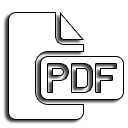A Antibacterial Activity Test of Ethanol Extract of Jeruju Fruit (Achantus ilicifolius L.) Against Staphylococcus aureus and Salmonella thypi Bacteria
DOI:
https://doi.org/10.33859/jpcs.v4i1.431Keywords:
Antibacterial, Jeruju Fruit ExtractAbstract
Background: According to WHO (2018), there are cases of antibiotic resistance in 500,000 people with suspected bacterial infections in 22 countries. Jeruju fruit extract (Achantus ilicifolius L.) has antibacterial activity because it contains secondary metabolite compounds such as alkoloids, phenols, flavonoids, tannins, saponins and steroids, which are expected to be an alternative choice in the treatment of bacterial infections.
Objective: To identify the antibacterial activity of jeruju fruit extract (Achantus ilicifolius L.) against the bacteria Staphylococcus aureus and Salmonella typhi to determine the MIC and KBM values.
Method: Type of research design True Experimental Research Posttest Only With Control Group research design. Antibacterial testing uses disc diffusion and dilution methods. With concentrations of 500mg/ml, 800mg/ml, 1000mg/ml, positive control ciproflaxacin and negative control DMSO.
Results: The results of the diffusion test showed that jeruju fruit extract was able to inhibit the growth of bacteria, there was a clear zone around the paper disc at a concentration of 500 mg/ml (9.95 mm). The results of the dilution test have a minimum inhibition at a concentration of 500mg/ml seen in clear media and the ability to kill bacteria at a concentration of 1000mg/ml. It can be said that jeruju fruit extract has MIC and KBM concentration values.
Conclusion: Jeruju fruit extract has antibacterial activity with an inhibitory zone at a concentration of 500mg/ml (9.95 mm) and has the power to kill Salmonella typhi bacteria at a concentration of 1000mg/ml.
References
Afifah, E. D. (2017). Indentifikasi Komponen Senyawa Dari Ekstrak Buah Laban (Vitex Pubescens Vahl) fraksi eter dan fraksi Kloroform. Ilmiah Kanderang Tinggang, 8(1), 7–53.
Agung, N. (2017). Buku Ajar: Teknologi Bahan Alam. Lambung Mangkurat University Press.
Amalia, S., Wahdaningsih, S., & Untari, E. K. (2014). Uji Aktivitas Antibakteri Fraksi terhadap Bakteri Staphylococcus aureus ATCC 25923. Trad Med, 19(2), 89–94. https://doi.org/10.22146/TRADMEDJ.8146
Angelina, M., Turnip, M., & Khotimah, S. (2015). Uji Aktivitas Antibakteri Ekstrak Etanol Daun Kemangi (Ocimum sanctum L.) terhadap Pertumbuhan Bakteri Escherichia coli dan Staphylococcus aureus. Jurnal Protobiont, 4(1), 184–189.
Damayanti, R., Lusiana, N., & Prasetyo, J. (2017). Studi Pengaruh Ukuran Partikel dan Penambahan Perekat Tapioka terhadap Karakteristik Biopelet dari Kulit Coklat (Theobroma Cacao L.) sebagai Bahan Bakar Alternatif Terbarukan. Jurnal Teknotan, 11(1). https://doi.org/10.24198/jt.vol11n1.6
Darsono, P. V., & Fajriannor, M. (2020). Aktivitas Antibakteri Ekstrak Dadangkak (Hydrolea spinosa) Terhadap Bakteri Bacillus subtilis, Staphylococcus aureus dan Escherichia coli. Jurnal Ilmiah Ibnu Sina (JIIS): Ilmu Farmasi.
Ernianingsih, S. W., Mukarlina, & Rizalinda. (2014). Etnofarmakologi Tumbuhan Mangrove Acanthus ilicifolius L., Acrostichum speciosum L. dan Xylocarpus rumphii Mabb. Di Desa Sungai Tekong Kecamatan Sungai Kakap Kabupaten Kubu Raya. Jurnal Protobiont, 3(2), 252–258.
Fajrina, A., Dinni, D., Bakhtra, A., Agung, L., & Adiwibowo, J. (2019). Uji Aktivitas Antibakteri Fraksi Ekstrak Etanol dari Batang dan Daun Nephrolepis biserrata (Sw) Schott Terhadap Eschericia coli. Higea, 11(1), 41–48.
Fakhruzy, Kasim, A., Asben, A., & Anwar, A. (2020). Review: optimalisasi metode maserasi untuk ekstraksi tanin rendemen tinggi. Menara Ilmu, 14(2), 38–41.
Fitriyah, N., Wahuning, N., & Kismanto, J. (2013). Obat Herbal Antibakteri Ala Tanaman Binahong. Jurnal KesMaDaSka, 116–122.
Ismail, Y. S., & Yulvizar, C. (2017). Isolasi, Karakterisasi dan Uji Aktivitas Antimikroba Bakteri Asam Laktat dari Fermentasi Biji Kakao (Theobroma cacao L.). Bioleuser, 1(2), 45–53.
Johannes, E., & Sjafaraenan. (2017). Uji Toksisitas Ekstrak Daun Jeruju Acanthus Ilicifolius Terhadap Aartemia Salina Leach. Bioma, Jurnal Biologi Makasar, 2(1), 56–59.
Julianto, T. S. (2019). Fitokimia Tinjauan Metabolit Sekunder dan Skrining Fitokimia. Journal of Chemical Information and Modeling, 53(9).
Kementrian Kesehatan Republik Indonesia. (2019). Profil Kesehatan Indonesia. Kementerian Kesehatan Republik Indonesia.
Kurniawati, S., Ardiningsih, P., & Widiyantoro, A. (2017). Aktivitas Antibakteri Ekstrak Daun Akar Bambak (Ipomoea sp.) Terhadap Bakteri Staphylococcus aureus dan Escherichia coli. JKK Mipa, 6(2).
Mahdiyah, D., Farida, H., Riwanto, I., Mustofa, M., Wahjono, H., Laksana Nugroho, T., & Reki, W. (2020). Screening of Indonesian peat soil bacteria producing antimicrobial compounds. Saudi Journal of Biological Sciences, 27(10), 2604–2611. https://doi.org/10.1016/j.sjbs.2020.05.033
Marjoni, R. (2016). Dasar - Dasar Fitokimia. CV. Trans Info media.
Muljono, P. F., & Manampiring, A. E. (2016). Uji aktivitas antibakteri ekstrak daun mayana jantan (Coleus atropurpureus Benth) terhadap pertumbuhan bakteri Streptococcus Sp. dan Pseudomonas Sp. Jurnal E-Biomedik, 4(1), 164–172. https://doi.org/10.35790/ebm.4.1.2016.10860
Mustarichie, R., Sulistyaningsih, S., & Runadi, D. (2020). Antibacterial Activity Test of Extracts and Fractions of Cassava Leaves (Manihot esculenta Crantz) against Clinical Isolates of Staphylococcus epidermidis and Propionibacterium acnes Causing Acne. International Journal of Microbiology. https://doi.org/10.1155/2020/1975904
Noval, N., Yuwindry, I., & Syahrina, D. (2019). Phytochemical Screening and Antimicrobial Activity of Bundung Plants Extract by Dilution Method. Jurnal Surya Medika, 5(1), 143–154. https://doi.org/10.33084/jsm.v5i1.954
Rachmawati, D. U. (2016). Uji Aktivitas Antibakteri Ekstrak Etanol, Etil Asetat dan Petroleum Eter Rambut Jagung Manis (Zea mays sacarata Strut). UIN Malang.
Radji, D. D. M. (2019). Buku Ajar Mikrobiologi : Panduan Mahasiswa Farmasi Dan Kedokteran. EGC Medical Publisher.
Ridha, N. (2017). Proses Penelitian, Masalah, Variabel, dan Paradigma Penelitian. Jurnal Hikmah, 14(1), 62–70.
Rolando, R. (2019). Senyawa Antibakteri Dari Fungi Endofit. In S. R. Wicaksono (Ed.), Senyawa Antibakteri Dari Fungi Endofit (1st ed.). CV. Seribu Bintang.
Sugiyono. (2016). Metode Penelitian Kuantitatif Kualitatif dan R&D. ALFABETA.
Suryati, N., Bahar, E., & Ilmiawati, I. (2018). Uji Efektivitas Antibakteri Ekstrak Aloe vera Terhadap Pertumbuhan Escherichia coli Secara In Vitro. Jurnal Kesehatan Andalas, 6(3). https://doi.org/10.25077/jka.v6.i3.p518-522.2017
Downloads
Published
How to Cite
Issue
Section
License
Copyright (c) 2023 Journal Pharmaceutical Care and Sciences

This work is licensed under a Creative Commons Attribution 4.0 International License.















